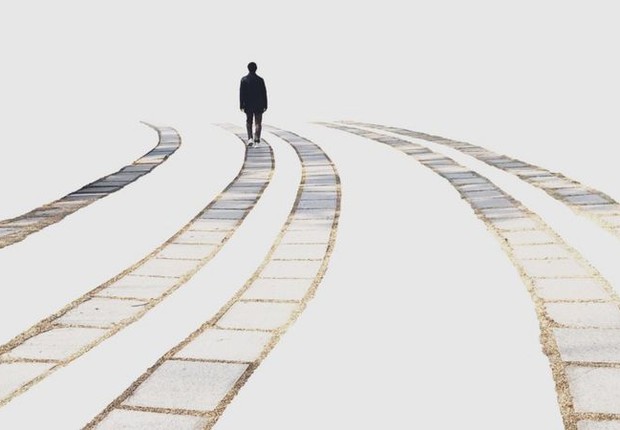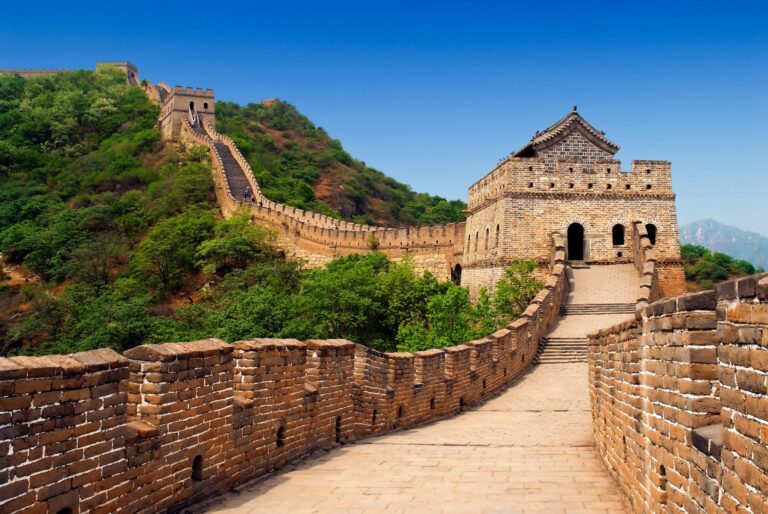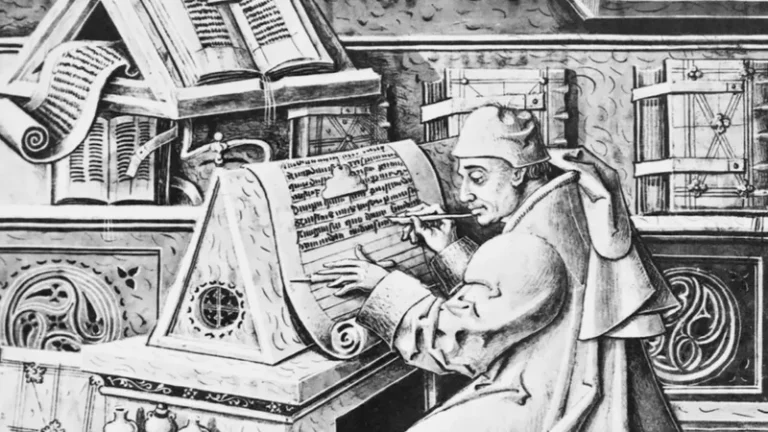Immerse yourself in the opulence and splendor of the Renaissance, an era renowned for its groundbreaking contributions to art, culture, and human thought. This epoch, shimmering with unmatched intellectual and artistic fervor, ushered in revolutionary transformations that forever altered the course of history. Encapsulating the very essence of human spirit and intellectual curiosity, the Renaissance marked the dawn of a new era, birthing masterpieces that continue to captivate hearts and minds worldwide. 🎭✨
In the upcoming discourse, we delve into the riveting beauty and grandeur of the Renaissance, taking you on an enlightening journey through the celebrated artworks, the iconic personalities, and the profound cultural shifts that epitomized this golden age. From the divine brush strokes of Leonardo da Vinci to the eloquent prose of William Shakespeare, the Renaissance was a vibrant tapestry of human creativity and ingenuity. 🖌️📚
Get ready to traverse the corridors of time, exploring the societal, religious, and political landscapes that served as the backdrop to this transformative era. From the heart of Florence to the lavish courts of England, you will gain profound insights into how the Renaissance continues to shape our understanding of art and culture. So sit back, relax, and let’s embark on this enthralling voyage into the world of the Renaissance. 🌍🕰️
The Renaissance Era: A Journey through Time
The Renaissance, a period stretching from the 14th to the 17th century, was a remarkable era marked by a renewed interest in the knowledge and learning of ancient Rome and Greece. This epoch, aptly named “The Renaissance,” meaning rebirth, signaled a profound shift in the cultural and intellectual mindset of Europe. It pulled the continent out of the stagnation of the Middle Ages and propelled it toward a new age of exploration, discovery, and innovation.
At its core, the Renaissance was a revival of classical learning and wisdom. Scholars and artists rediscovered the texts, philosophies, and artistic achievements of ancient civilizations, which had long been neglected during the medieval period. This renewed focus on classical antiquity led to groundbreaking developments in art, science, literature, and politics. Education flourished as universities expanded and the humanist movement took root, emphasizing the value and potential of the individual. Humanists believed that by studying the past, individuals could cultivate wisdom and improve society.
Art and architecture underwent dramatic transformations during the Renaissance. Artists like Leonardo da Vinci, Michelangelo, and Raphael pioneered techniques that brought unprecedented realism and depth to their work. The use of linear perspective, chiaroscuro, and anatomical precision allowed painters and sculptors to capture the human form and natural landscapes with lifelike accuracy. Iconic works such as Leonardo’s “Mona Lisa” and Michelangelo’s “David” continue to captivate audiences today, serving as enduring symbols of artistic genius and innovation.
The Renaissance also witnessed significant scientific advancements. Figures such as Galileo Galilei and Nicolaus Copernicus challenged long-held beliefs about the cosmos, setting the stage for the Scientific Revolution. Their observations and experiments laid the groundwork for modern physics and astronomy, reshaping humanity’s understanding of the universe and our place within it. This period encouraged empirical observation and critical thinking, values that remain central to scientific inquiry today.
Literature and philosophy thrived as well. Writers like Dante Alighieri, Petrarch, and William Shakespeare expanded the boundaries of language and expression, exploring themes of love, morality, and the human condition. Their works not only reflected the complexities of Renaissance society but also influenced future generations across the globe. The written word became a powerful tool for disseminating new ideas and challenging traditional authority, further fueling the intellectual dynamism of the era.
Politically, the Renaissance saw the gradual evolution of governance and the birth of modern statecraft. The decline of feudalism and the rise of powerful city-states, such as Florence, Venice, and Milan, contributed to a climate of innovation and competition. Patronage systems emerged, where wealthy families and institutions supported the arts and sciences, further intertwining culture with economic and political power.
In essence, the Renaissance was more than just a revival of classical ideas; it was a transformative period that reshaped every aspect of society. The cultural, scientific, and artistic breakthroughs of the Renaissance laid the foundation for the modern world. Its legacy is still evident today in the way we approach education, creativity, and innovation. As we journey through this pivotal epoch, we gain invaluable insights into the enduring human spirit—a spirit driven by curiosity, the quest for knowledge, and the relentless pursuit of excellence.
Artistic Innovations during the Renaissance
The Renaissance was a golden era for the arts. Artists like Michelangelo, Leonardo da Vinci, and Raphael developed new techniques that revolutionized the field. One notable technique was the use of perspective. This provided depth to paintings, enabling artists to create three-dimensional scenes on a two-dimensional canvas.
Also, the use of chiaroscuro (contrast between light and dark) provided a dramatic effect, bringing characters to life. Furthermore, artists started to emphasize the importance of depicting the natural world in their works, leading to an increased focus on realism.
Iconic Works of the Renaissance
- The Last Supper by Leonardo da Vinci: Painted on the wall of a convent in Milan, this masterpiece depicts the last meal of Jesus with his disciples, with an astounding level of detail and emotional depth.
- David by Michelangelo: This sculpture stands as a testament to the artist’s prowess in depicting the human form. The statue, carved from a single block of marble, captures the biblical hero in a pose that signifies both tension and readiness.
- Sistine Chapel Ceiling by Michelangelo: This magnificent fresco depicts numerous biblical scenes, showcasing Michelangelo’s expert understanding of human anatomy and his ability to create complex narrative scenes.
The Influence of Humanism on Renaissance Culture
The Renaissance was not only about artistic advancements. It was also about a shift in ideology. Humanism, a movement that emphasized the value and potential of the individual, gained prominence during this time.
The Rise of Individualism
Humanism, the intellectual movement that blossomed during the Renaissance, fundamentally transformed how people viewed themselves and their place in the world. Central to this transformation was the concept that every human being possesses inherent worth and the capacity for individual achievement. This shift in thinking ushered in the rise of individualism, a radical departure from the collective, community-focused mindset of the Middle Ages. The notion of individualism placed a new emphasis on the self, celebrating personal expression, creativity, and the unique contributions of each person.
In art and literature, this newfound focus on the individual became vividly apparent. Renaissance artists began to explore self-portraiture and incorporate their own likenesses into their work, thereby expressing not just their technical prowess but also their personal identity. Artists like Albrecht Dürer and Leonardo da Vinci created self-portraits that were rich in detail and introspection, revealing aspects of their personality, thoughts, and emotions. These self-depictions were revolutionary in a period where art had traditionally been commissioned to serve religious or aristocratic narratives rather than to reflect personal identity.
The influence of individualism extended beyond the realm of visual arts. In literature, writers started to explore human experience from a personal perspective. Figures such as Petrarch and later, Shakespeare, delved into the complexities of human emotion and the intricacies of personal identity. Their works often centered on individual struggles, aspirations, and the inner life, marking a significant departure from the collective themes that dominated medieval literature. The rise of the personal essay and autobiographical writing also illustrated a growing interest in understanding oneself and one’s place in the world.
This cultural shift toward individualism was not only reflected in creative expression but also had profound implications for society at large. It encouraged a spirit of inquiry and self-improvement, leading individuals to question established norms and pursue knowledge independently. The emphasis on the individual paved the way for advancements in science and philosophy, as thinkers began to trust their own observations and reason over traditional authorities. This empowerment of the individual became a cornerstone for later developments in democratic thought and the modern notion of human rights.
In summary, the rise of individualism during the Renaissance was a multifaceted movement that reshaped art, literature, and society. By celebrating personal identity and individual achievement, humanism broke away from the constraints of the past and laid the foundation for a culture that values the unique contributions of every human being. This legacy continues to influence modern society, reminding us of the enduring power of individual creativity and the importance of self-expression.
The Expansion of Knowledge
The humanist movement also encouraged the pursuit of knowledge, leading to advancements in various fields. The invention of the printing press in the mid-15th century played a crucial role in this. It allowed for the mass production of books, leading to an explosion in literacy and making knowledge more accessible than ever before.
The Renaissance Influence on Modern Society
The impact of the Renaissance extends far beyond its historical period, laying the foundation for modern Western culture and influencing contemporary life in profound ways. This transformative era reawakened an interest in classical learning and artistic expression, sparking innovations in art, science, literature, and philosophy. Techniques such as linear perspective and chiaroscuro revolutionized the way art was created and appreciated, setting new standards that continue to inform modern aesthetics.
Equally important was the rise of humanism, which emphasized the inherent worth and potential of every individual. This shift in mindset fostered a spirit of inquiry and critical thinking, paving the way for scientific discoveries and the development of democratic ideals. The emphasis on individual achievement and the pursuit of knowledge laid the intellectual groundwork for the Enlightenment and subsequent technological revolutions that shape our society today.
Moreover, Renaissance ideas about education, governance, and the arts continue to resonate. They inspire modern educational philosophies, underpin democratic institutions, and drive innovation in creative industries. In essence, the Renaissance not only redefined its own time but also established enduring principles that continue to mold our cultural, scientific, and social landscapes.
The Birth of the Modern Mindset
The Renaissance marked a shift from a society governed by religious dogma to one that values scientific inquiry and individual achievement. It led to the birth of the modern mindset, with its emphasis on reason, critical thinking, and an insatiable curiosity about the world.
The Lasting Legacy of Renaissance Art
Renaissance art continues to be revered for its incredible craftsmanship and beauty. It has influenced countless artists throughout history and continues to do so today. The Renaissance’s emphasis on realism, the use of perspective, and the exploration of human emotion are all elements that continue to play a key role in modern art.
In conclusion, the Renaissance was an era of great artistic and cultural advancement. Its influence continues to resonate today, shaping our understanding of art, culture, and the very essence of human existence. The beauty of the Renaissance is a testament to the enduring power of human creativity and the endless potential of the human spirit.
Conclusão
“Discover the Beauty of The Renaissance: A Dive into the Art and Culture of a Golden Age” serves as a revealing guide into an epoch marked by an explosion of creativity and knowledge. The Renaissance, undeniably, was a time of rebirth and transformation in art and culture, laying the groundwork for our modern world. Through the meticulous examination of pivotal artworks, the significant shift from religious to humanist themes is illuminated, reflecting the society’s evolving mindset. Furthermore, the exceptional individuals such as Michelangelo, Leonardo da Vinci, and Raphael, who spearheaded this movement, have left an indelible mark, their influence transcending centuries. With a profound focus on detail, symmetry, and the human form, Renaissance art was a testament to the spirit of exploration and discovery. However, the Renaissance was not just about art. It was a holistic movement that also encompassed literature, music, and science. The influence of the era has undoubtedly shaped our modern understanding and appreciation of the arts, and continues to inspire us today. The exploration of this golden age enlightens us about our past and guides us towards the future, reminding us of the power of human creativity and intellect. 🎨🏛️📚



